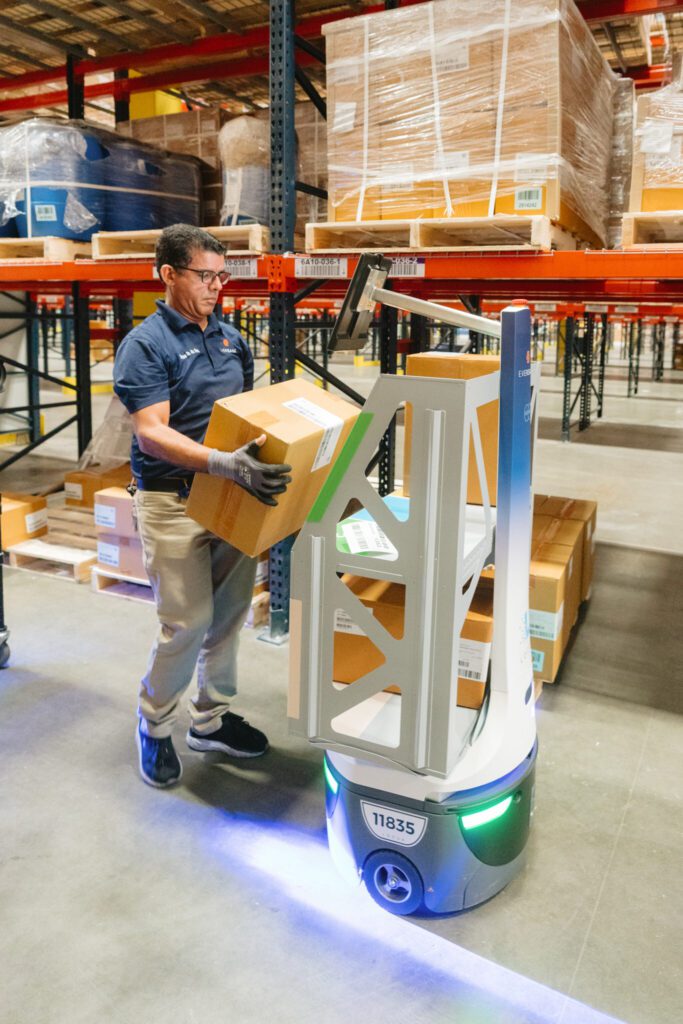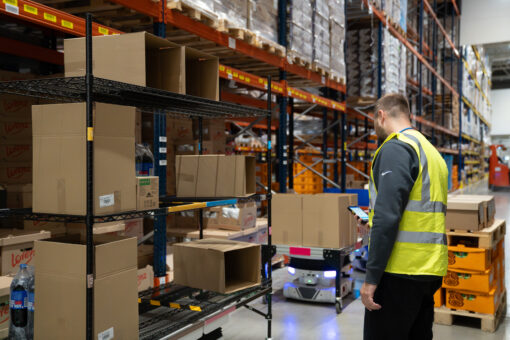WP: How to achieve 400 UPH with Locus Fast Pick
WP: How to achieve 400 UPH with Locus Fast Pick Download Now!
Low-Code Tech: A Playbook for Warehouse Managers
Mary Hart, Sr. Content Marketing Manager

Legacy warehouse systems weren’t built for today’s pace. From e-commerce pressure to labor shortages to increasingly complex fulfillment models, the warehouse floor demands more flexibility than ever, and low-code application platforms (LCAPs) are emerging as the bridge between operations and innovation to give managers the power to adapt without waiting for IT or signing up for months-long development cycles.
In our recent Warehouse Automation Matters podcast, Datex’s Bryan Batchelder and Dave Castanon shared how LCAP changes the rules and how warehouse managers can take advantage.
Diagnose Your Legacy System’s Limitations
Many warehouse leaders know their systems are aging but hesitate to change. As Castanon explained, “If it’s not broke, don’t fix it” has kept too many warehouse operations stuck. But when delivery timelines shrink and product lines expand, those limitations become risk factors.
Actionable Advice:
- Conduct a 30-minute “legacy pain audit” with your warehouse operations and IT teams and identify 3–5 areas where your current WMS slows down or prevents new capabilities (e.g., adding new workflows, launching an e-commerce channel, or integrating robotics like autonomous mobile robots from Locus Robotics).
- Create a “can’t do list” of things your WMS should support but doesn’t and revisit it quarterly.
Understand the Warehouse Power of Low-Code
A low-code platform lets users configure workflows, UIs, and integrations without heavy custom code. It brings software building blocks into the hands of operators, and not just developers.
Batchelder described it as building with LEGOs: “Swap the pieces you need and remove what you don’t.”
Actionable Advice:
- Request a low-code demo (from vendors like Datex) focused on your use case and watch how a UI or workflow is changed in real time without custom development.
- Ask your team: If we could configure our own processes, what would we fix first?
Streamline Warehouse Operations with Modular Thinking
Instead of buying an entirely new WMS for each new sales channel or business model, LCAP allows you to build what you need, when you need it without affecting core functionality.
Actionable Advice:
- Map out a recent business pivot like taking on a new product category or fulfillment model and then ask: What changes were required in the WMS? How long did they take?
- Identify where modular configurations (like drag-and-drop fields or adjustable workflows) could have saved time.
Make Automation Integration Faster
EVERSANA used Datex Studio to integrate with Locus Robotics’ robots (Origin and Vector) for both case picking and pallet building without requiring custom-built middleware or separate project teams.
Actionable Advice:
- List current or planned automation systems (e.g., robots, conveyors, rate-shopping APIs). Ask your WMS vendor how easy integration is and whether they support custom API endpoints.
- Pilot a single integration using a low-code approach and track time saved vs. traditional methods.
Empower Non-Technical Team Members
One of the biggest LCAP benefits is putting control in the hands of warehouse managers and process owners and not just developers.
Batchelder noted that with Datex Studio, even complex logic can be implemented by managers using AI agents like OpenAI to help write TypeScript code.
Actionable Advice:
- Choose one warehouse supervisor to be your “low-code champion” and give them access to a sandbox environment and task them with modifying one screen or process.
- Build a playbook of repeatable UI or workflow changes your team can handle in-house.
Accelerate Time-to-Value
LCAP dramatically shortens the cycle from “idea” to “solution.” As Batchelder shared, teams can implement a change, review it, and revise it, sometimes all in one meeting.
Actionable Advice:
- Use “low-code sprints”: Set aside one day each month to gather feedback, update a workflow, and test it live. Treat it like an agile development cycle.
- Prioritize fixes that improve pick speed, accuracy, or onboarding time and track performance before and after.
Customize Without Breaking the System
Many 3PLs support wildly different workflows of e-commerce, pharma, and hazmat, all in one facility. With legacy systems, customizations can break upgrades and LCAP keeps everything within a safe, upgrade-compatible sandbox.
Actionable Advice:
- Ask your current vendor: Can we customize workflows without going off the upgrade path?
- If evaluating a new platform, demand documentation showing how sandboxed changes are preserved during system updates.
Reframe the ROI Equation
As Batchelder noted, “The ROI math changes.” With LCAP, enhancements that were too expensive before, like custom UIs or new workflow logic, are now fast and affordable, which means more operational improvements become justifiable.
Actionable Advice:
- Review past enhancement requests that were tabled due to cost or complexity and re-evaluate those using a low-code framework and reassess ROI.
- Track how quickly changes are implemented and share these “wins” with leadership to justify continued investment.
LCAP is about making your WMS work for you instead of replacing your WMS. For warehouse managers facing constant change, it offers a faster, smarter, and more scalable way to solve problems and seize opportunities.
Want to hear how Datex and EVERSANA made it work?
Check out our Warehouse Automation Matters episode featuring Datex’s Bryan Batchelder and Dave Castanon.




